Properly tackling climate change requires open discussions and hard questions, in particular of people who might have already made up their minds about the best way forward. Geoff Russell explains.
I attended a Greens Party fundraiser recently in Adelaide. I didn’t do a head-count of Animal Justice Party (AJP) members in attendance, but I know I wasn’t alone. Many AJP members have a complex relationship with the Greens. Tammy Franks, Greens Member of the South Australian Legislative Council, has been a terrific advocate on animal issues in State Parliament and I’ve worked with her on many occasions, either campaigning on shared concerns or arranging preferences during elections, and the like.
The night was full of all the things I love about the Greens, quiz questions about critters, pictures of just the eye of an animal asking you to name the species, or, even harder, having to tag a sound with its species name. Can anybody think of another quiz night where tables would nominate a representative to get up on stage and perform their favourite animal sound?
Environmental politics is full of warm touchy feely issues about cute or rare animals; as well as the not so cute. Interest in wildlife is deep and emotional for many of us, even if we are ignorant of the facts and analysis that a professional ecologist would bring to the table.
But however strong an emotional connection to land or its wild plants or animals might be, it doesn’t guarantee sensible policy; not on its own. So I’d have had a smattering of challenging educational questions. The kind of questions that expand your horizons, shrink your comfort zone and allow you to make truly rational policy decisions.
For example, how many tonnes of mined quartz do Uyghurs have to crush with big hammers to make a thousand megawatts of solar panels? Where does most of the world’s polysilicon in solar photovoltaic (PV) panels come from? You might like to read this for clues.
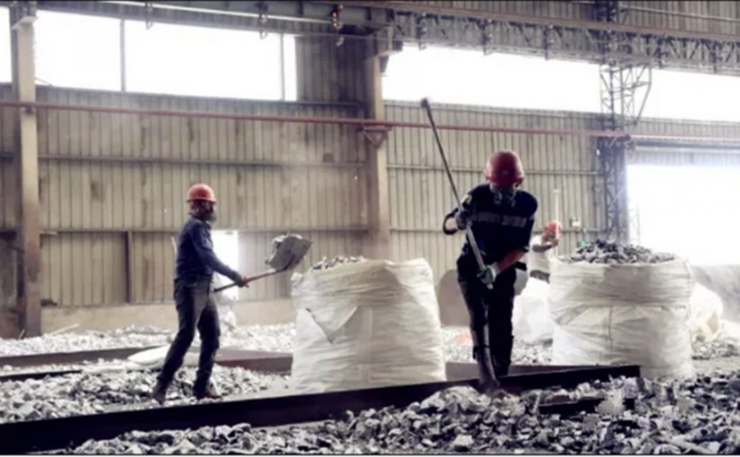
In the field of public health, you may want to ban a drug completely because of its vile consequences, but more detailed analysis often finds that harm minimisation, with all its complexities and nuances gives better outcomes.
Similarly, Green distaste and opposition to mining is legendary and a reasonable response to unsightly and dangerous consequences, but the beautiful pictures used for campaigns against mining are all the products of cameras made with a dazzling collection of mined materials: complex alloys of copper, silver, zinc, aluminium, steel, nickel, various polycarbonates, boric oxide, lead zinc oxide, silica and boron trioxide, lens coatings like polymethylmethacrylate. Each part of a camera is highly specialised and the full manifest of materials and processes used along the supply chain would be easily longer than this entire post.
The modern media industry, central to Greens’ and other environmental campaigns, is typically hosted by cloud servers spewing out advertising to social media platforms. Popular music, long co-opted by environmental campaigners, is performed on stages strewn with amplifiers, cables, and massive speakers. Modern campaigning, as a process, is predicated on a large and varied mining industry feeding material to sophisticated supply chains built by engineers using advanced physics and chemistry.
Sensible environmental policies, just like public health policies, are all about quantifying impacts and running the numbers; not simplistic slogans, knee-jerk NIMBY reactions and pithy sound bites.
What do you do when the facts change?
Plenty of famous people have been quoted as saying: “When the facts change, I change my mind. What do you do?” I don’t know who the first person who said this was; nor does it matter. It’s a pretty obvious response to ridicule for changing your mind. Of course, media bashers will note that anybody changing their mind will be automatically accused not just of a back-flip, but more likely of an embarrassing back-flip, or a humiliating back-flip.
In one sense, facts never change, but scientific explanations of them and predictions for the future based on that understanding can change dramatically. But the Greens mostly avoid these issues with a policy platform set decades ago, and a rigidity that makes it impervious to both back-downs and facts. It’s much easier to have such a platform when you aren’t actually in Government having to make hard decisions.
Lazy policies incompatible with a green vision
The list of Greens’ policies totally inconsistent with a vision of treading more lightly on the planet has a couple of standout examples: animal agriculture and nuclear power.
Where were the relevant quiz night questions? There were no questions about the relative size of the deforestation drivers in Australia. Greens care about extinctions but not, apparently about what is the principle driving force. It’s burgers not forestry.
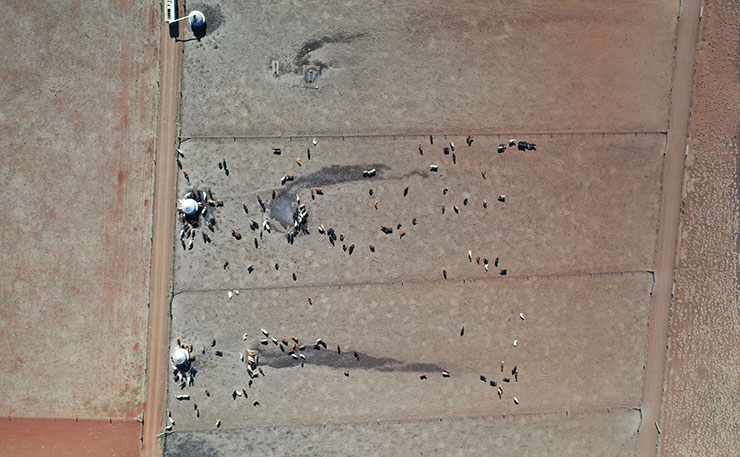
The Greens still support the most powerful climate warming industry in Australia, the ruminant (cattle and sheep) industry.
The Greens still support the industry putting the most wildlife habitat at risk, again the ruminant industry.
Daniel Lunney, back in 2001, wrote a stunning paper describing how the sheep industry drove 24 mammal species to extinction between 1841 and 1900 in Western NSW. Rabbits and foxes sometimes delivered the knockout blow, but it was the 58 million sheep in NSW by the end of that period that dropped many wildlife populations to their knees.
Australia-wide, there were close on 100 million sheep by 1900, all of them smashing wildlife habitat everywhere. Of the 100 million hectares cleared since white arrival, over 70 million has been for ruminants. Many Greens love to hate cats, but it’s habitat destruction that always tops the league table of extinction causes. But the Greens don’t want to scare BBQ loving voters, so their policies continue to support the biggest driver of extinctions.
Quiz nights are meant to be fun evenings, but a few uncomfortable truths about the impacts of the food on most tables could have made it more educational.
The Greens also still oppose the cleanest most environmentally friendly energy source on the planet, nuclear power. I reversed my views on this technology over a decade ago, and I’m ashamed it took me so long; the facts are actually pretty obvious. But you have to dig below the superficial level of campaign slogans.
The body of science showing that nuclear power is better than renewables in every way that Greens should care about is vast; less land use, not just for the power plants but for transmission grids; less mining and resource usage, less pollution of many kinds, far simpler and more benign waste streams.
Decouple media’s Jesse Freeston has produced a terrific YouTube clip on high level nuclear waste. And batteries don’t need to be included.
But the Greens have an anti-nuclear policy and are sticking to it; bugger the facts. Their attitude is no different from people whose attitudes to women, men and gender were formed 30 years ago and who actively avoid anything that might upset those views.
Can non-scientists be blamed for not keeping up with 30 years of research on DNA and radiobiology? Yes they can. There is no shortage of informative books on the topic. “Power to Save the World … 2007”, “Radiation, what it is, what you need to know”, “Radiation and Reason”. If you want to understand how the nuclear industry has been strangled by regulation and its own stupidity, and aren’t frightened by numbers and graphs, then I highly recommended “Why nuclear power has been a flop”. You can even Google this book and download it for free.
One particular problem for nuclear power’s position in Green policy is the frequent confusion of history and science.
Professor Robert Gale is a US Doctor who treated firefighters at the Chernobyl nuclear accident. When the HBO series Chernobyl came out, he wrote a four-part series on the bad science therein. The film is quite good as history, people really did have the set of beliefs about radiation portrayed in that film. But they aren’t true!
It’s rather like an Australian historical drama where the central characters believe that Aboriginal people are innately inferior in every way. People watching HBOs Chernobyl and believing various statements of the protagonists are like people watching such an Australian history drama and adopting the beliefs of those characters. You can read Gales’ authoritative critique, or my one-part shorter form.
The party of critters is now the party of big miners
This resistance of Greens (locally and globally) to any science that doesn’t play to their traditional policy positions, is now coming home to roost. Former Australian Chief Scientist, Alan Finkel, put it succinctly on ABC Radio recently (6th June, *Life Matters, ABC).
“We are going to shift from an age of big oil to big shovels, we have to do an enormous amount of mining.”
How could we reduce the amount of mining? It’s a no brainer; nuclear power. A nuclear-powered grid doesn’t need firming with batteries or flooded valleys (aka hydro-electricity) or burning forests (aka wood or biomass), like they do in Germany. It doesn’t need the ever-growing web of transmission lines, not just covering continents but connecting them.
Nuclear can’t supply all our energy requirements, but it’s surprising how many it can supply once you start digging. This is because it produces heat as its major output; which is then turned into electricity. Most of the world’s energy is used as heat, not electricity.
That would have made an interesting quiz question. Which form of energy do we use more of, heat or electricity?
Finkel has a new book out, Powering Up, Unleashing the Clean Energy Supply Chain. Finkel’s interviewer, Hilary Harper asked him to spell out what was keeping the chain leashed? Finkel says it clearly: “Taking a global perspective, the real limitations are the rate at which we can expand the production of the elements we need… to convert to a clean energy system.”
Meaning it’s all about the mining.
“There will be an enormous increase in the amount of mining… on First Nations people’s lands, on public lands, on private land.”
The party of cute critters is now the party of big mining, very big mining.
People sometimes compare mining coal with mining metals. It’s chalk and cheese. Dig up a tonne of coal and you get a tonne of coal. But if you want a tonne of copper, you typically need to dig up 160+ tonnes of ore, and then start crushing. The leftover muck usually ends up in tailings dams; which fail from time to time and sometimes kill people.
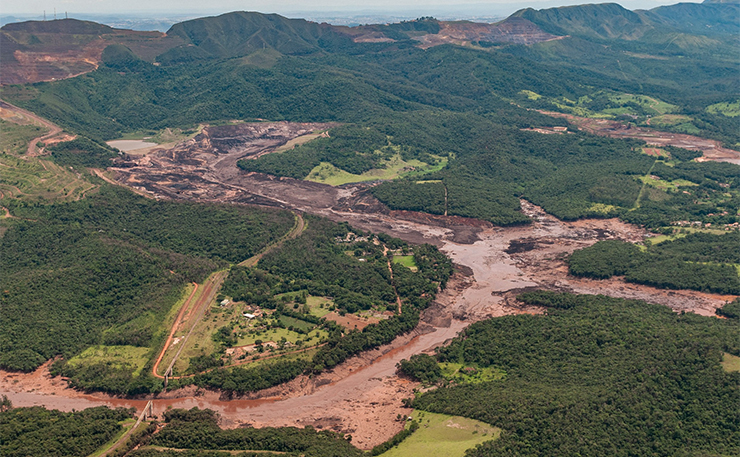
In 2019 the Brumadinho tailings dam collapsed in Brazil and killed almost 300; that’s almost 10 times more than the Chernobyl accident killed, but how come almost nobody has heard of the former, and everybody has heard of the latter?
Global coal production is over 7,000 million tonnes per year, compared to just 22 million for copper. But copper tailings dams constitute almost half of the total of almost 9,000 million tonnes of tailings added to the global “stock” each year. Uranium mining generates just one per cent of annual global tailings. The copper business is booming, more transmission lines, electric vehicles, and thicker cables throughout modern grids to handle two-way flows of larger amounts of electricity.
The Greens are now not just the party of big mining, but the party with policies designed to maximise the number of new mines.
If I were running a Greens Quiz night, I’d be asking questions like what tonnage of stuff do you need for a 1,000 MW solar farm?
-
- a) 5,000 tonnes
- b) 140,000 tonnes
- c) 200,000 tonnes
- d) Who cares?
Answer: b or c, depending on the technology. About half of that is the panels and the rest is the aluminium or steel (and perhaps concrete) to mount them. Talk to any Green and I’ll wager they won’t have a clue about this number; despite it being trivial to calculate. The supplementary question would be, how much land would you need to cover in the process? I’d also be asking how many 1,000 MW solar farms would you need to generate the same amount of electricity per year as a 1,000 MW nuclear plant?
-
- a) 1
- b) 3
- c) 5
- d) 10
Answer: b, c, or d, depending on the location and technology. It’s about 10 in Germany. It’s astonishing how many people don’t get it that a mega-watt is a unit of power. Energy is power multiplied by time. So, while a 1,000 MW nuclear plant can run 24 hours a day and produce 24,000 MWh of energy, a solar plant typically delivers about 8,000 MWh of electricity per day, or just 2,400 MWh in Germany.
Mention the term “capacity factor” in most Green company and you’ll more than likely get a blank stare… WTF?
While nothing comes close to the habitat trashing power of our grazing industries, renewables can certainly be significant at scale.
The Asian Renewable Energy Hub project blocked in the last year of the Morrison Government would have cleared some 20,000 hectares for solar panels on a total project area of 666,000 hectares, land with access roads and wind turbines and transmission lines. That’s one-tenth the size of Tasmania. It was blocked mainly because of its potential and actual impact on a Ramsar wetlands, Eighty Mile Beach.
The SunCable project, still at the planning stage, is even bigger if it proceeds. It will clear and cover about 60,000 hectares with close to two million tonnes of panels, plus supporting brackets and poles. Then it will run an undersea cable some 4,200km to Singapore.
I couldn’t find anything on the Greens’ website, but I’m guessing they aren’t keen on seabed mining. How does that compare to laying thousands of kilometres of cables for moving renewable energy around? The Greens are strangely silent about this.
And all that environmental devastation (both direct and indirect) will supply just 15 per cent of Singapore’s electricity! You could produce that amount with one smallish Canadian CANDU nuclear reactor supplied with about 60-70 tonnes of uranium a year. And the reactor would be running decades after you collected those two million tonnes of panels (and their supporting structures) for recycling.
There was not a single quiz question on the links between renewable energy and mining in the Greens’ quiz night. They apparently have a ‘don’t ask, don’t tell’ policy on the topic.
Mining is the classic out of sight out of mind industry. We all benefit from the products of mining daily and we all hope our miners act properly. We often don’t get that “our” miners are global industries who might be headquartered in Australia, but operating anywhere from the Congo to the Andes. Problems at the Escondida mine in Atacama desert in Chile feature in the Business and Human Rights Resource Centre (BHRRC) report, which is jointly owned by BHP, Rio Tinto, and a JECO-Corp, a Japanese conglomerate.
On the whole, I’d judge that mining’s environmental and human rights issues are better managed by companies under the kind of scrutiny you see of BHP and Rio-Tinto, but mining is a complex and filthy business and stuff goes wrong; tailings dams fail, leaks happen.
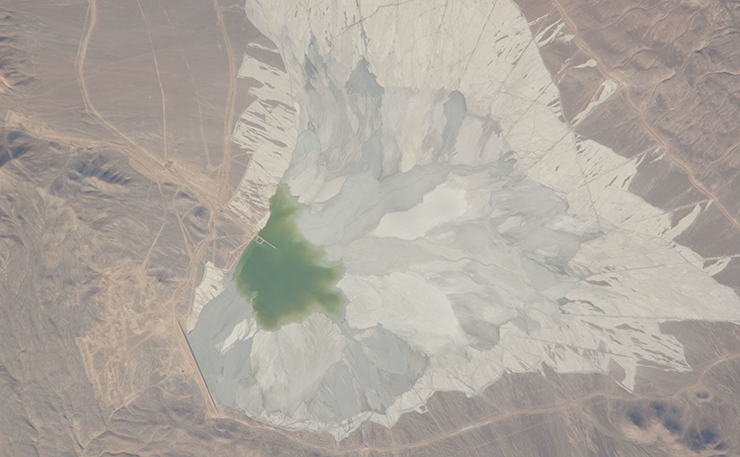
The children of Port Pirie have lead levels which are still a national disgrace; despite a massive investment intended to fix the problems. The three products of that smelter – lead, silver and sulphuric acid – are used by all of us; having them is as non-negotiable as the further reductions in the emissions of the smelter. The common solution to such problems is to simply off-shore them to China; after all, they still have plenty of Uyghurs.
There were no questions on the human rights impacts of renewable or battery supply chains at the Greens’ quiz night.
In 2018 the Government of Peru declared a “health state of emergency” in 12 districts of Pasco after high levels of lead, arsenic, aluminium and manganese were found in local water, along with blood lead levels in people of up to 19.8 mcg/dL. This is four times higher than the level recommended for investigation by our NHMRC. They are Port Pirie levels, but over a much wider area, and it’s just one of 532 allegations collected by the BHRRC, an organisation which tracks human rights abuses around the world by businesses, as distinct from state abuses.
Among their various focus areas are the mining and processing of a set of transition minerals, those on every country’s list of minerals critical for a transition to a net-zero future: cobalt, copper, lithium, manganese, nickel and zinc. Among other things, they keep track of allegations of environmental harm, human rights abuses and attacks on human rights defenders. The Business and Human Rights Resource Centre has been running their transition metals tracker since 2010 and they now have 1,468 impacts of various kinds; environmental as well as human rights abuse allegations. They are tracking 93 companies and 172 mining operations globally.
Big open cuts
If you’ve ever seen a big open cut mine pit, you won’t forget it easily. It looks big on TV, but when you are standing on the rim, it is astonishing. We can’t avoid mines, but sensible policies would be aimed at harm minimisation. Compare the mining requirements of renewables and batteries with nuclear and the answer is simple and blindingly obvious. Here’s a picture of the kind of mine that produces about two-thirds of the world’s uranium.
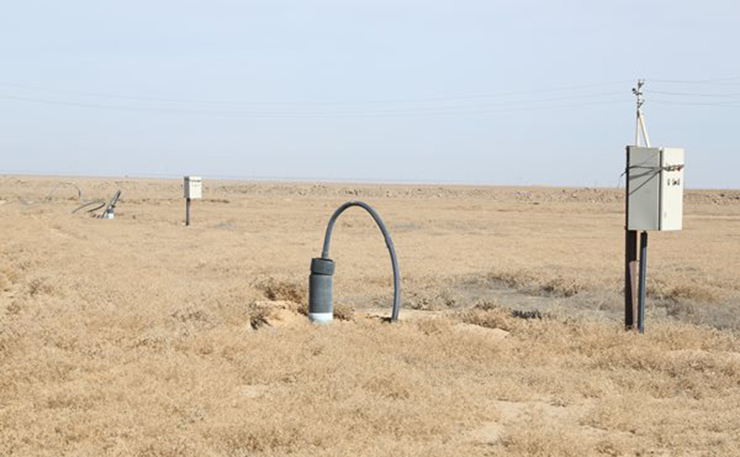
It’s an in-situ leaching process; this one is in Kazakstan, there is another like this in South Australia. Do I need to spell it out? There are no tailings generated at all with this process. Why, when I talk about how environmentally friendly nuclear power is, do so many people say (defiantly) “But not when you consider the mining!”. Probably because they’ve never been to a quiz night which asked how most of the world’s uranium is produced.
It’s worth repeating that a nuclear-based grid needs no batteries, not on the plant and not on people’s houses.
We have totally failed in Australia to understand the supply chain issues for wind and solar power. We have acted like these are touchy feely cottage industries produced by retirees with knitting needles and wool. We have ignored the multinational mining expansions described by our former Chief Scientist.
The Greens quiz night was full of people who care. The Party is an empathetic voice on many critical issues facing Australia and the world. But empathy isn’t enough.
When I was growing up, my younger sister’s life was saved by a GP with the lowest imaginable empathy score in his practice. But he was justifiably judged as the best doctor; the one you wanted when things were tough. Too much empathy and too little skill can make for really bad decisions, not-to-mention appalling policy.
A Greens MP once accused me of bombarding them with facts about nuclear power. Mea Culpa. But somebody had to do it.
This same MP didn’t know anything about a policy they supported, and the few tiny morsels of what they thought they knew were slogans with the pungent odour of kitten shit; considerably stinkier than bullshit.
We need the Greens, but we need them to be much greener and with minimal streaks of brown.
Donate To New Matilda
New Matilda is a small, independent media outlet. We survive through reader contributions, and never losing a lawsuit. If you got something from this article, giving something back helps us to continue speaking truth to power. Every little bit counts.




